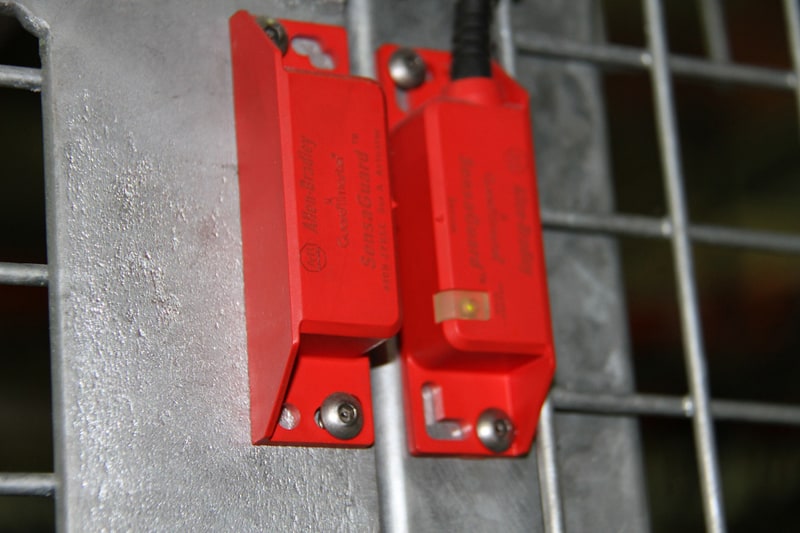The trouble with most safety guard switches and sensors is that they are tested under ideal working conditions, according to the appropriate standards and strict manufacturer’s specifications. Welcome to the real world of machine safety, governed by Murphy’s Law and at times Rafferty’s Rules. Where constant practice doesn’t always make perfect. On the contrary, it can make things work loose and make operators complacent…
Machine safety should be paramount, however mechanical failures and operator ‘brain snaps’ can erode the best-laid plans of maintenance managers and safety officers.
Take the case of Mechanical Switches (Key Operated) on doors and hatches. The longer they are in service, the more chance that locking screws can loosen, and foreign objects can become lodged in the key slot.
If this happens, the interlock switch may not shut the machine down when the door/ hatch is opened.
Even two key-operated switches might fail if the screws work loose through constant vibration, and the door gets outside the tolerances of the switches.
The only way to prevent subsequent accidents is to closely monitor the installation and check the machinery cutout switch regularly.
Guarding against those who disconnect switches
More significant and widespread, are the problems associated with operator error.
Familiarity can breed complacency if not contempt; and no one can think of a potential way to defeat electrical safety devices better than someone who uses the equipment on a daily basis.
Tired of the length of time some machines take to shut down and restart, many operators attempt to cheat, defeat or override safety devices, failing to respect the power of the equipment and the lethal hazards it presents.
They do this with the best intentions; they may want to clear jams, perform maintenance and make adjustments. After all, it’s “only for a minute or two”. Famous last words.
However, turning off the safety guard system is not only unacceptable, it’s also illegal.
One of the most common problems is that a tongue switch on a safety guard could be bypassed by an operator armed with a spare tongue, which definitely defeats the purpose.
Then there is the frequent problem of people actually leaving a key switch in, resulting in the machine running with the safety gate permanently open – which also flies in the face of industrial machine safety.
Emergency stop switch guidelines
As a maintenance manager or safety officer, you have a duty of care to conduct machinery safety audits to ensure that bypassing or disabling of the guarding system – either by accident or deliberately – is as difficult as humanly possible.
In fact, Australian Standards (AS4024.1-2006 Safety of Machinery) lays down guidelines about electrical safety switches, emergency stop buttons, disconnect switches, safety door locks, limit switches, light curtains and so forth.
Among numerous other things, it states that the only time – even during a breakdown – safety functions can be manually suspended (for tasks such as fault finding, cleaning, process changeover and machine safety testing) is when a ‘specific control mode’ is in place which simultaneously:
- disables all other control modes
- permits operation of the hazardous elements only by continuous action of an enabling device, a hold-to-run control device or a two-hand control device; and
- permits operation of the hazardous elements only in reduced risk conditions (e.g. reduced speed, reduced power/forces, step by step operation, e.g. with a limited movement control device.
Qualtech can help you solve all your safety guard switch problems
Qualtech has the experience, personnel and machine safety products & systems to minimise, if not completely eradicate, risk.
Systems such as two hand enabling controls, in conjunction with modes including “limited inch” and “safe, slow speed”; state-of-the-art light curtains, safety sensors, magnetic safety switches, and many others.
For more information about these machine safety systems and how we can be of service to you, give Qualtech a free call now on 1800 QUALTECH (1800 782 583) or simply click here to contact us.

